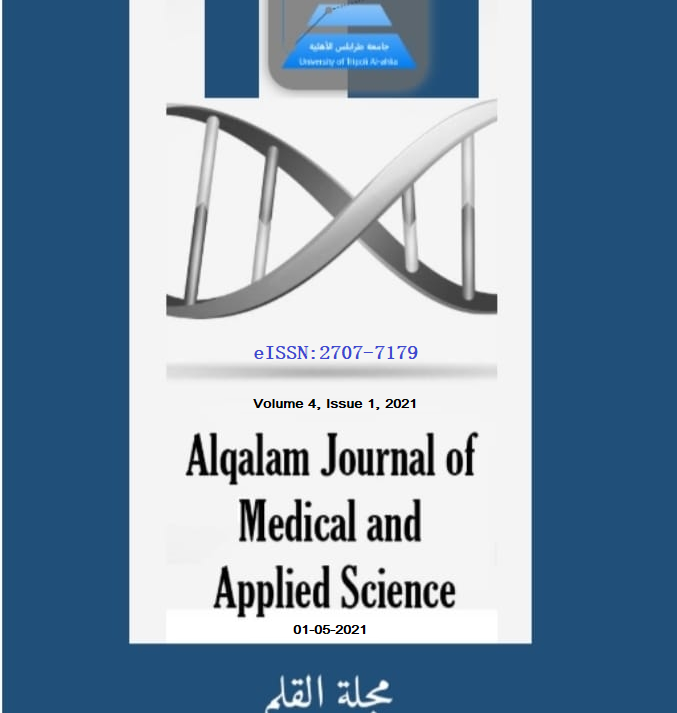Consequences of Phacoemulsification Surgery in Libyan Patients with Pseudoexfoliation Syndrome
Keywords:
Phacoemulsification, Cataract, Pseudoexfoliation, ComplicationsAbstract
Objective. The aim of this study was to evaluate the demographic characteristics and rate of intraoperative complications of phacoemulsification in patients with pseudoexfoliation syndrome (PEX). Methods. A retrospective comparative study of a total of 193 patients, schedules for phacoemulsification in the martyr Sohail Al Atrash eye hospital-Benghazi were included. Demographic parameters like age and sex as well as clinical features including the presence of PEX and intraoperative surgical complications were collected, analyzed and compared to control group without PEX. Results. A total of 193 consecutive patients (89 males and 104 females) aged 40-90 years were included in this study. The mean age was (68.3± 6.5) in the PEX group and (63.1±8.4) in the control group. It was significantly higher in the PEX group compared to controls (P=0.005), with no significant gender differences. Approximately, 193 of these patients (23 with PEX, 170 without PEX as the control group) that underwent phacoemulsification cataract extraction with intraocular lens implantation. There was no statistically significant difference in intraoperative complications between PEX and non-PEX groups. Posterior capsule rupture occurred in 4.3% in PEX and 5.3% in non-PEX, vitreous loss was not presented in PEX compared to 1.8% occurred in non-PEX, dropped nucleus occurred in 4.3% in PEX and 0.6% in non-PEX. Conclusion. Phacoemulsification can be safely performed by experienced hands in cataractous eyes with PEX.















